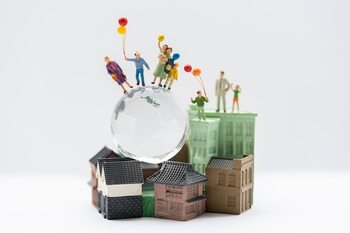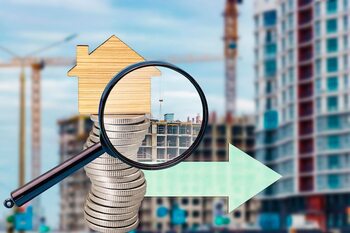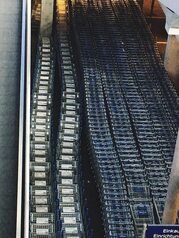The role of ecological diversity in real estate value

Ecological diversity is an invaluable asset that directly influences real estate value, especially when comparing rural and urban areas. In Costa Rica, where nature is part of our identity, understanding how biodiversity impacts property value is crucial for investors and owners. The conservation of ecosystems not only enriches the environment but also attracts environmentally conscious buyers. This article explores how ecological factors can transform the real estate market and highlight the importance of choosing wisely between rural and urban options.
1. The connection between biodiversity and quality of life
Biodiversity and quality of life are intrinsically linked, as an environment rich in flora and fauna not only beautifies the landscape but also provides a range of essential benefits for human well-being. The presence of green spaces, for example, is associated with better mental and physical health; studies have shown that areas with greater biodiversity encourage outdoor activities and promote an active lifestyle. Additionally, balanced ecosystems contribute to the purification of air and water, resulting in healthier and more resilient communities in the face of the adverse effects of climate change.
From a real estate perspective, properties located in areas where biodiversity is valued and preserved tend to maintain their value and even increase their appreciation. Current buyers are not only looking for attractive physical structures; they also consider the natural environment as a decisive factor in their purchasing decision. The integration of natural parks, ecological reserves, and green spaces within urban developments not only improves the quality of the inhabited environment, but also translates into an additional appeal for those interested in living in harmony with nature. Therefore, recognizing this connection between biodiversity and quality of life is essential to understand how these elements can positively influence the real estate market.
2. How sustainability affects property values
Sustainability has become a determining factor in property valuation, as current buyers increasingly seek homes that are not only aesthetically pleasing but also environmentally friendly. Houses and buildings that incorporate sustainable practices, such as the use of renewable energy, rainwater harvesting systems, and recycled materials, tend to have greater market appeal. This trend is reflected in an increase in real estate value in areas where sustainability is a priority, creating significant demand among those interested in investing in properties that contribute to the well-being of the planet.
Additionally, proximity to green spaces and healthy ecosystems can significantly influence property prices. Areas surrounded by nature not only provide a healthier environment for their inhabitants but also improve air quality and offer recreational opportunities. Buyers are aware of these benefits and are willing to pay more to live near natural parks or ecological reserves. Therefore, fostering ecological diversity in urban and rural settings not only benefits the environment but also translates into substantial appreciation for homeowners and interested investors.
3. Advantages of the rural environment: more than just landscapes
The advantages of rural environments go beyond the beautiful landscapes that characterize them. In these areas, air quality and access to natural spaces are significantly higher compared to urban environments, which contributes not only to a healthier lifestyle but also to emotional and mental well-being. This constant contact with nature allows residents to enjoy outdoor activities such as hiking, farming, and observing flora and fauna, elements that foster a sense of community and connection with the environment. Therefore, living in a rural environment translates into an enriching experience that promotes both physical and mental health.
Additionally, properties located in rural areas tend to have more accessible prices than their urban counterparts, which is an important attraction for buyers and investors interested in obtaining good value for money. The decrease in population density also means less competition for basic resources like water and energy, as well as lower levels of noise and visual pollution. All this translates into a quieter and more sustainable home. As more people seek to escape the fast pace of cities, real estate value in rural areas can increase significantly due to this shift in housing preferences. Thus, investing in rural environments not only represents a viable option from an economic standpoint but also promotes more sustainable and balanced lifestyles.
4. The urban appeal: infrastructure and nature in harmony
The urban appeal lies in its ability to integrate modern infrastructure with natural spaces, creating an environment that is not only functional but also aesthetically pleasing. Cities that have successfully incorporated parks, vertical gardens, and green areas into their urban planning have shown a significant increase in property values. This approach not only enhances the quality of life for residents but also acts as a magnet for those looking to invest in a place where nature and urbanization coexist in balance. The presence of green areas has become a decisive factor for many buyers, who prioritize well-being and sustainability.
Additionally, urban biodiversity development initiatives have positive effects beyond the economic aspect. By fostering greater interaction between residents and their natural environment, a more committed community to conservation and environmental care is generated. Projects that integrate natural landscapes within the urban fabric not only beautify the surrounding areas but also help improve public health by providing accessible recreational spaces. Thus, this comprehensive approach to real estate development highlights how a conscious investment can translate not only into economic benefits but also into a better quality of life for all citizens.
5. Green projects and their impact on real estate appreciation
Green projects have gained relevance in the real estate sector, becoming a determining factor for the appreciation of properties. Initiatives such as the promotion of green spaces, community gardens, and the implementation of sustainable technologies not only contribute to improving the quality of the urban environment but also generate additional appeal for potential buyers and investors. In this sense, developments that incorporate ecological elements tend to maintain a higher market value due to their ability to offer a healthier and more sustainable lifestyle. The connection with nature has become essential for those looking to acquire a property, driving a growing demand for projects that prioritize environmental conservation.
Additionally, the implementation of sustainable practices in real estate projects can positively influence the public's perception of a community or neighborhood. Areas with green certifications or recognized for their sustainability efforts tend to attract buyers interested not only in living there but also in long-term investment. This phenomenon is not limited to urban contexts; it also extends to rural areas where ecological projects can revitalize local economies and raise the value of surrounding properties. Thus, green projects act as catalysts to increase interest and investment in real estate, reflecting how commitment to biodiversity has a direct effect on property appreciation.
6. Investment in protected areas: a safe bet?
Investment in protected areas emerges as an attractive strategy for those seeking a balance between profitability and sustainability. These zones, which safeguard biodiversity and essential ecosystems, not only contribute to environmental preservation but can also offer significant advantages in terms of real estate value appreciation. Properties near protected natural areas tend to have greater appeal for buyers, especially those interested in healthier and more sustainable lifestyles. Furthermore, access to green spaces can enhance the quality of life for residents and increase interest in living in less urbanized environments.
However, it is essential to consider that investing in protected areas also involves certain challenges. Strict regulations on land use and limitations on developing real estate projects can create uncertainty for some investors. Nevertheless, those who understand the intrinsic value of these investments can benefit significantly by anticipating market trends that favor sustainability. Investing in protected areas not only means securing a potentially strong financial return but also contributing to the well-being of the planet and the conservation of valuable natural resources for future generations.
7. Public perception of nearby natural spaces
Public perception of nearby natural spaces plays a fundamental role in property valuation. In many communities, proximity to parks, nature reserves, or green areas not only enhances the quality of life for residents but also translates into higher demand in the real estate market. People tend to associate these environments with a healthier and more sustainable lifestyle, increasing the appeal of properties located near these ecosystems. This phenomenon is especially relevant in Costa Rica, where biodiversity is globally recognized and buyers increasingly value access to natural spaces as an integral part of their living experience.
Moreover, public perception of natural spaces influences how communities approach urban and rural development. As environmental awareness grows, many buyers prioritize living in areas that respect and preserve the natural environment. This trend has led to a revaluation of rural areas that were previously considered less desirable; today, properties surrounded by nature are seen not only as retreats but also as strategic investments. Therefore, promoting policies that encourage conservation and sustainable development can be beneficial for both the environment and the local real estate market.
8. Case studies: real estate success in ecological areas
Real estate success in ecological areas can be exemplified through various case studies that highlight the growing demand for properties located in natural environments. In areas like Monteverde and Manuel Antonio, where biodiversity is abundant, sustainable developments have shown a notable increase in their value. Investments in eco-villages and residential projects that integrate environmentally friendly practices have not only attracted buyers interested in a more sustainable lifestyle but have also fostered a community aware of the conservation of natural resources. This phenomenon has led these regions to become preferred destinations for both tourists and permanent residents.
Another successful example is the development of eco-friendly condominiums in the coastal area of the Costa Rican Caribbean. Here, bioclimatic architecture has been implemented and significant efforts have been made to preserve local ecosystems. These projects not only offer spectacular views and access to pristine beaches, but also promote sustainable living practices, such as the use of renewable energies and rainwater collection systems. As a result, properties have seen considerable increases in their valuation, demonstrating that a commitment to ecology can be a powerful driver for real estate market growth. The trend towards eco-friendliness not only benefits the environment; it also represents a significant economic opportunity for those willing to strategically invest in this type of development.
9. Future of the real estate market: trends towards sustainability
The future of the real estate market is undoubtedly linked to sustainability, a trend that has become essential in the decision-making process for purchasing and development. As consumers become more aware of their environmental impact, they seek properties that not only offer comfort and style but also a real commitment to sustainable practices. This includes everything from the use of eco-friendly materials in construction to the integration of green spaces that promote local biodiversity. Investing in properties that respect and promote the natural environment is not only seen as a responsible choice but also as a significant added value that can increase long-term appreciation.
The growing demand for sustainable residences has led developers and investors to reevaluate their strategies and prioritize projects that incorporate ecological principles. In this context, rural areas are gaining prominence over urban ones, as they offer direct access to pristine natural environments and the possibility of living in harmony with nature. Government policies are also incentivizing this transition towards sustainability, promoting initiatives that protect local ecosystems while facilitating responsible urban development. In this way, the future of the real estate market will not only depend on traditional economic factors but also on the commitment to ecological diversity and its ability to attract a new generation of buyers committed to a sustainable lifestyle.



